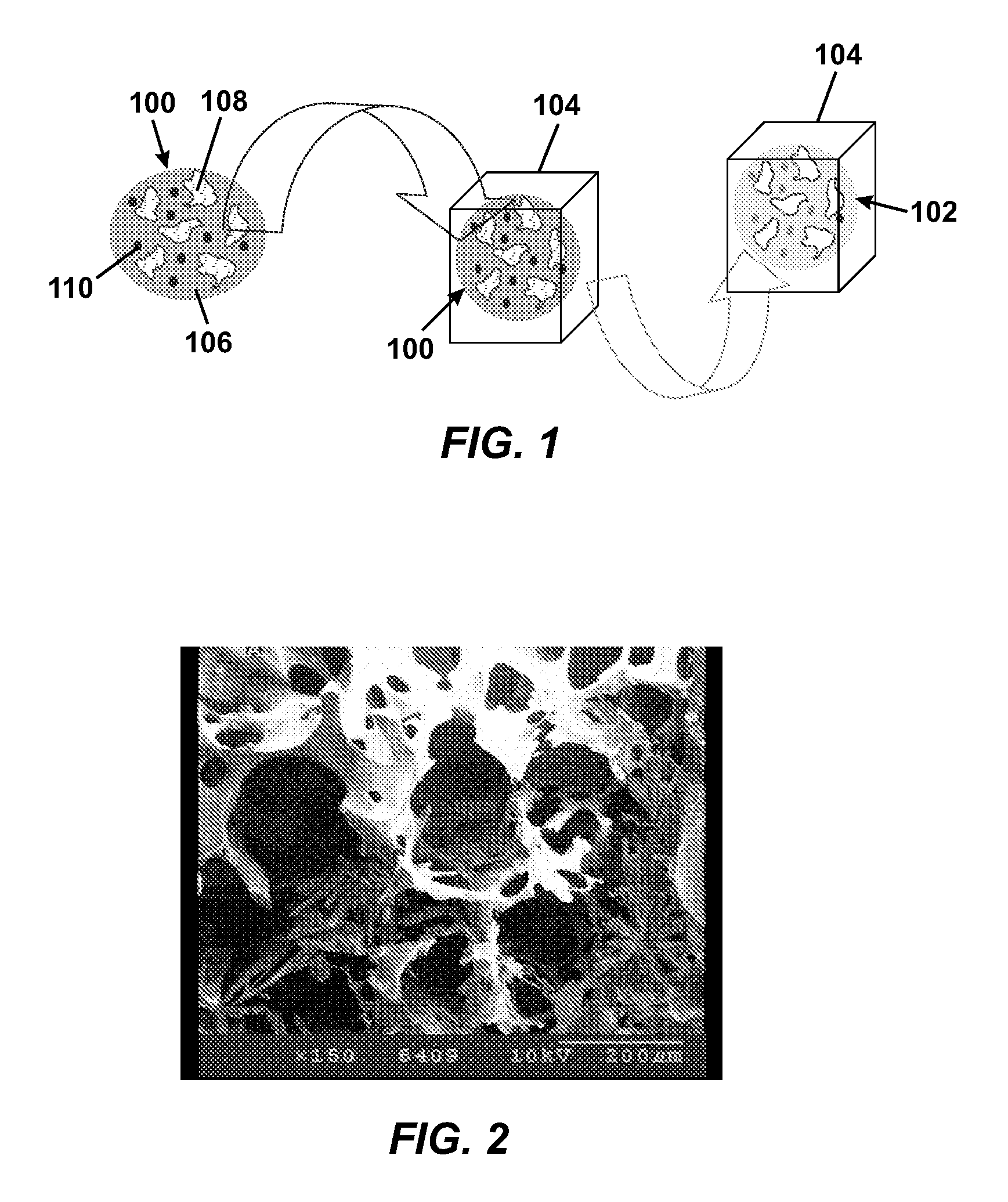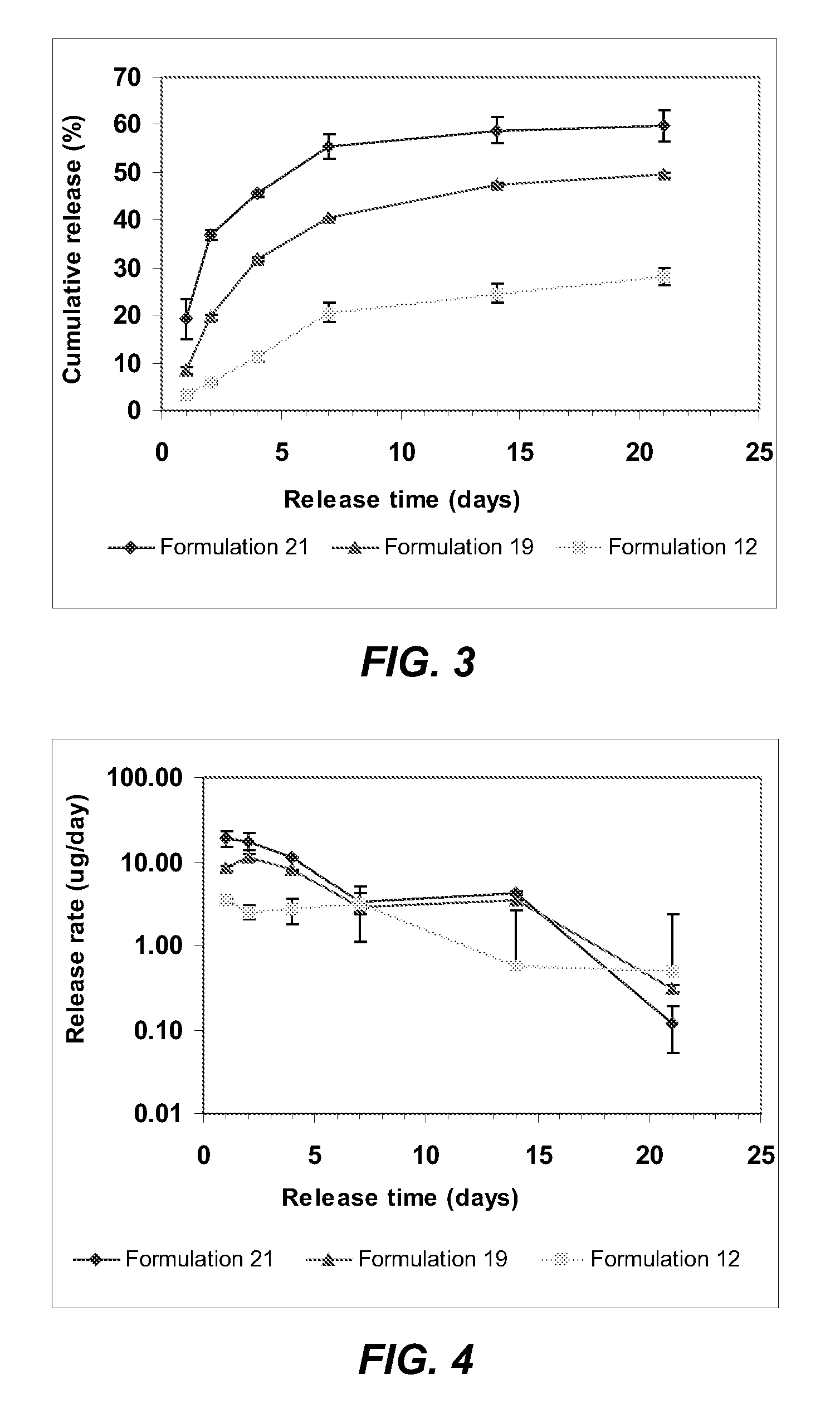In-Situ Forming Porous Scaffold
a porous scaffold and in-situ technology, applied in the field of in-situ forming porous scaffolds, can solve the problems of time-consuming and inconvenient reshaping of prefabricated porous scaffolds to suit a specific patient, and the difficulty of implantation of prefabricated porous scaffolds
- Summary
- Abstract
- Description
- Claims
- Application Information
AI Technical Summary
Problems solved by technology
Method used
Image
Examples
example 1
[0038] Viscous gels having the compositions shown in Table 1 were prepared. The preparation involved taring a glass vessel on a Mettler PJ3000 top loader balance. A biodegradable polymer was added to the glass vessel, followed by a corresponding biocompatible solvent. In this example, the biodegradable polymer was poly D,L-lactide-co-glycolide (PLGA), (L / G ratio of 75 / 25), available as RESOMER® RG 752 (PLGA-752), and the biocompatible solvent was selected from benzyl benzoate, benzyl alcohol, and mixtures thereof. The polymer / solvent mixture was manually stirred in the glass vessel with a stainless steel square-tip spatula, resulting in a sticky amber paste-like substance containing white polymer particles. The glass vessel with the polymer / solvent mixture was sealed and placed in a temperature controlled incubator equilibrated to 39° C. The polymer / solvent mixture was removed from the incubator when it appeared to be a clear amber homogeneous gel. Incubation time intervals ranged f...
example 2
[0039] Lyophilized bovine serum albumin (BSA), available from Sigma, was grinded. The ground lyophilized BSA was sieved through a 120 mesh screen, followed by a 400 mesh screen, to obtain particles having a size range between 38-125 μm.
example 3
[0040] Porogen particles having the compositions shown in Table 2 were prepared. Porogens were selected from mannitol, sucrose, tricalcium powder, available from Berkeley Advanced Biomaterials Inc., Berkeley, Calif., and mixtures thereof, and blended in a Waring blender. The mixture was then transferred to a 13-mm round compression die and compressed at 5 toms for 5 minutes to form a pellet. The pellet was ground using a Waring blender. Particles were collected between 120-mesh (125 μm) and 400-mesh (300 μm) sieves.
TABLE 2FORMULATIONMANNITOLSUCROSETCP5100006750257250758010009075251002575
PUM
| Property | Measurement | Unit |
|---|---|---|
| pore size | aaaaa | aaaaa |
| pore size | aaaaa | aaaaa |
| pore size | aaaaa | aaaaa |
Abstract
Description
Claims
Application Information
 Login to View More
Login to View More - R&D
- Intellectual Property
- Life Sciences
- Materials
- Tech Scout
- Unparalleled Data Quality
- Higher Quality Content
- 60% Fewer Hallucinations
Browse by: Latest US Patents, China's latest patents, Technical Efficacy Thesaurus, Application Domain, Technology Topic, Popular Technical Reports.
© 2025 PatSnap. All rights reserved.Legal|Privacy policy|Modern Slavery Act Transparency Statement|Sitemap|About US| Contact US: help@patsnap.com



